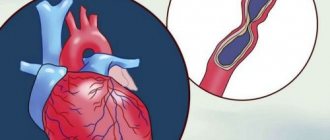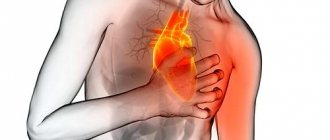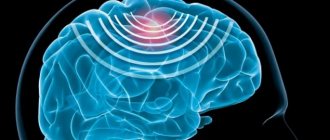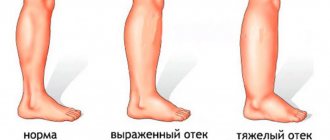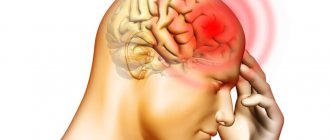Vegetative-vascular dystonia is a polysymptomatic complex consisting of various groups of manifestations. Not the least role in this is given to psycho-emotional imbalance, which can lead to functional failures of many organs. Afobazole for VSD helps to cope with these kinds of symptoms: it eliminates anxiety and feelings of restlessness, and harmonizes the state of the nervous system. With the help of Afobazole, you will significantly ease the course of the disease and be able to avoid its crises.
What is primary in the occurrence of anxiety-depressive syndrome – depression or alcoholism?
In this couple of diseases, it is difficult to determine what was the root cause - depression or alcoholism. Their cause-and-effect relationship is often implicit. It all depends on the specific case. Quite often, a person in a stressful situation reaches for a glass of alcohol as a lifeline. Stress can be caused by various circumstances - conflicts at work and in the family, loss of income, death of loved ones, social problems and even a simple quarrel in transport. The more unexpected the negative event, the stronger the stress state it causes.
On the other hand, it is known that chronic alcoholism causes a failure of the “stress” system, similar to depressive states with increased release of corticotropin and activation of the hypothalamic-pituitary system. It is corticotropin that is responsible for increasing the formation of cortisol in the adrenal glands, which is responsible for loss of appetite, the emergence of a subjective feeling of anxiety, immunosuppression and increased inflammatory reactions. These changes prolong depression after alcohol abstinence for up to four weeks. When alcoholism and depression are combined, the risk of their occurrence doubles, and long-term use of large doses of ethanol increases the risk of developing depression, suicide attempts and anxiety by 40%.
By the way, a huge role in the development of depression and alcohol addiction belongs to the common hereditary factor. It is responsible for 35-60% of the occurrence of these diseases.
Acupuncture treatment is an effective way to get rid of alcohol addiction in the early stages of the disease.
More about vegetative-vascular dystonia
This is a syndrome accompanied by disruption of the autonomic nervous system and functional failures of many organs. Vegetative-vascular dystonia is not a separate disease, but is considered a complex of symptoms of various etiologies.
A similar condition was first described in 1918 in America by the doctor B. Oppenheimer, who called it “neurocirculatory asthenia.” In Soviet times, the syndrome was called vegetative-vascular dystonia.
In the modern world, its manifestations are united under the name “neurocirculatory dystonia”. According to the ICD-10 classification, this is expressed by the concept of “somatoform dysfunction of the autonomic nervous system.”
Symptoms of this condition are quite varied:
- pain in the heart area, palpitations;
- breathing disorders in the form of shortness of breath or suffocation, lack of air;
- constant headaches, dizziness;
- poor sleep;
- pain in joints, muscles;
- fatigue, weakness, malaise, loss of consciousness;
- convulsive twitching of arms and legs, tremors;
- violation of thermoregulation;
- low-grade fever up to 37°;
- increased sweating, sensations of heat, dry mouth.
Of course, such manifestations of VSD can have real causes: chronic infections, intoxication, hypoxia, prenatal and postnatal lesions, osteochondrosis of the cervical spine with impaired blood supply to the brain.
But most often such symptoms become a manifestation of neuropsychic disorders: hysteria, suspiciousness, increased impressionability, nervous exhaustion.
This is also facilitated by various kinds of events that cause emotional stress and throw the nervous system out of balance. In this case, a number of symptoms are joined by others that indicate mental imbalance:
- sense of anxiety;
- obsessive thoughts and phobias;
- fear of death;
- feeling like you're going crazy;
- disbelief in the reality of what is happening.
Rather, it is nervous disorders that cause painful and unpleasant sensations in other organs. This fact is confirmed by the fact that during the examination, organic disorders in the declared organ are not recorded.
In situations where nervous tension goes beyond acceptable limits and mental state is disturbed, Afobazol will help. The drug is an anxiolytic, that is, it has
ability to eliminate anxiety. Along with it, irritability, excessive concern and groundless fears go away.
Relieving nervous tension, the drug helps to relax, reduce anxiety and improve sleep, and eliminates obsessive fears. With the normalization of the nervous system, symptoms of dysfunction of internal organs disappear. In addition, cognitive functions improve: memory and concentration.
What determines the duration of depression in alcoholism?
One of the most pressing questions is how long does depression last after heavy drinking? First of all, it depends on the severity of depression from a hangover. In acute alcohol withdrawal syndrome, severe somatic, autonomic and neurological disorders are observed. In this state, depression is often combined with increased irritability, anxiety and hysteria. Anxiety usually lasts 2-3 days, but depression after heavy drinking, accompanied by melancholy and self-blame, is more stable and lasts for 1-2 weeks.
Sphere of influence
The drug has a milder and more restrained effect than other tranquilizers. And the question of whether Afobazol will help with severe mental disorders remains open. But he is able to cope with nervous overstrain during VSD.
In addition, experts recommend taking Afobazol for:
- neurasthenia;
- anxiety disorders;
- with psychosomatics;
- alcohol and tobacco withdrawal;
- premenstrual syndrome.
Sometimes people cannot even explain what triggered the emergence of such feelings. However, at the physiological level, this is explained quite simply: a surge of adrenaline entails a sharp stimulation of nervous processes and the functioning of internal organs, and since its action is systemic, the entire body is involved.
PA is mainly mental in nature. It can be caused by stress, nervous overload, emotional tension, as well as hormonal imbalances, alcohol abuse and smoking.
But it should be noted that VSD and panic attack go hand in hand. And often the latter is a manifestation of neurocirculatory dystonia during its exacerbation.
The role of Afobazole during a panic attack is to suppress the release of adrenaline and maintain it at the proper level.
Classification of attacks
Modern psychotherapy identifies three main categories of panic attacks:
- Spontaneous attacks. They are characterized by unexpected development and arise in a situation in which the patient feels comfortable. The spontaneous attack usually occurs first, then most patients attribute symptoms to specific places, situations or circumstances.
- Situational attacks. They arise in a certain situation or when waiting for a long time for this situation.
- Conditional-situational attacks. They are provoked by factors of a biological nature: drinking alcohol, coffee, hormonal changes. However, this connection is rather arbitrary and difficult to trace. Often a panic attack that occurs under the influence of a chemical stimulus later turns into a situational one.
- Chemically provoked attacks. Separately, panic attacks are distinguished that first occurred under the influence of psychoactive (narcotic) substances - ecstasy, LSD, “speed”, “spice”, cannabis (marijuana), psilobiscins (“narcotic mushrooms”). As a rule, such a panic attack is atypical (it contains vivid experiences of depersonalization with fear of losing control over oneself and a feeling of change and loss of one’s own personality), and concomitant autonomic disorders can be either very pronounced or not expressed at all. Often, after such a panic attack, even once suffered, a persistent fear for one’s health develops, so pronounced that daily functioning is markedly and persistently reduced - so much so that the person is practically unable to work.
It is important to understand the cause for treatment to be successful.
Contributing Factors
In addition to the main causes of a panic attack, there are also provoking factors. They increase the likelihood of developing the disorder even in completely healthy people.
These factors include:
- Low physical activity. Leads to the emergence of various negative thoughts and high impulsiveness. Physical inactivity is especially dangerous for teenagers.
- Excessive caffeine consumption. Contributes to low levels of emotional exhaustion.
- Smoking and alcoholism. They have a negative effect on blood vessels and reduce resistance to stress and depression.
- Sleep disorder, when a person is often in a state of lack of sleep.
- Emotional poverty. Holding thoughts and emotions inside for long periods of time often leads to anxiety attacks.
What are the symptoms of panic attacks?
The condition that occurs during fear is associated with the release of adrenaline into the blood. It is he who triggers the biological reaction to the threat, as we wrote - prepares for fight or flight. Changes occur in the functioning of the heart, lungs, kidneys, blood vessels, which are felt as symptoms of panic attacks, here are the most common:
- Feeling of fear, experiencing a threat to life
- Rapid heartbeat
- Difficulty breathing frequently, there may also be a “lump in the chest”
- Feeling hot or, conversely, becoming cold and shaking
- Blood vessels can spasm, causing headaches
The patient may breathe rapidly, complain of palpitations, “the heart is jumping.” Within an hour the symptoms subside. If panic attacks recur, they usually seek help from a psychotherapist or psychologist. Panic attacks can indicate an anxiety disorder or depression, or even physical illness. If a person experiences panic in a particular context repeatedly, phobias associated with those specific circumstances arise. The symptoms of a panic attack are themselves a source of stress and can come in waves. Despite the very unpleasant symptoms, panic attacks can be successfully treated.
PsyAndNeuro.ru
We present to your attention a review translation of clinical recommendations for the treatment of panic disorder of the American Psychiatric Association, prepared jointly by the scientific Internet portal “Psychiatry & Neuroscience” and the Clinic of Psychiatry and Addiction Medicine Doctor SAN.
Panic disorder or episodic paroxysmal anxiety is a mental disorder characterized by the spontaneous occurrence of panic attacks from several times a year to several times a day and the anticipation of their occurrence, which are accompanied by certain neurovegetative symptoms. A characteristic feature of the disorder is recurrent attacks of severe anxiety (panic), which are not limited to a specific situation or circumstances and, therefore, are unpredictable.
Create a therapeutic alliance
- Be sensitive to the patient's wishes and concerns regarding treatment.
- Explain panic disorder in language the patient can understand.
- Support the patient during phases of treatment that may increase anxiety (eg anticipating side effects of medications, immersion in agoraphobic situations).
Assess the patient's condition
- Assess features of the clinical picture that may influence the treatment plan, including agoraphobia, degree of situational fear and avoidance behavior; presence of psychiatric comorbidities, including substance abuse; presence of physical health problems.
- It is necessary to determine whether panic attacks are a symptom of panic disorder or are associated with substance use, medical illness (eg thyroid disease), or side effects of medications (eg oral corticosteroids).
- It should be kept in mind that panic disorder can co-occur with many physical and mental illnesses, in particular personality disorders, substance abuse and mood disorders.
EXAMINATION OF A PATIENT WITH PANIC DISORDER
- Medical history and current condition
- Mental problems in the past
- History of non-psychiatric illnesses
- History of substance use, including illicit substances, prescription and over-the-counter medications, and other substances (eg caffeine) that may produce physiological effects and exacerbate panic symptoms
- Biography (eg key events in life)
- Social, occupational (including military service) and family history
- Medicines taken
- Previously practiced treatment
- Overview of body systems
- Mental status assessment
- Physical examination
- Appropriate diagnostic tests to identify possible causes of panic symptoms
SOMATIC DISEASES THAT OCCUR IN PANIC DISORDER MORE FREQUENTLY THAN IN THE GENERAL POPULATION
- Thyroid diseases
- Cancer
- Chronic pain
- Heart diseases
- Irritable bowel syndrome
- Migraine
- Mitral valve prolapse
- Vestibular disorders
- Allergic conditions
- Respiratory diseases
Create an individual treatment plan
- Consider the nature of symptoms, frequency of symptoms, reasons for their occurrence and associated conditions.
- To better assess symptoms, you can ask the patient to keep a diary. A diary will help assess changes in mental status and response to treatment.
- Consider the patient's nationality and cultural background when developing a treatment plan.
Assess patient safety
- Be careful when assessing your risk of suicide. Panic disorder is associated with an increased risk of suicidal ideation and suicide attempts, even in the absence of comorbid conditions such as depression.
- Decide whether the patient's safety requires hospital treatment.
ASSESSMENT OF THE RISK OF SUICIDE IN PATIENTS WITH PANIC DISORDER
- Identify specific psychiatric symptoms that are associated with suicide attempts
- Collect information about past suicide attempts, suicide and mental health of relatives, as well as current sources of stress
- Assess protective factors – reasons to continue living
- Ask about suicidal thoughts, intentions, plans, methods of committing suicide, preparation for suicide
Assess the type and extent of functional impairment
- It is necessary to find out how panic disorder harms the patient in such areas of life as work, study, family, social relationships, and leisure.
- The goal of treatment should be to minimize impairment in these areas of life.
Determine treatment goals
- Reduce the frequency and severity of panic attacks, anticipatory anxiety, agoraphobic avoidance, achieve complete remission of symptoms and return to the level of functioning that was before the illness.
- Treat co-occurring mental disorders, if present.
Monitor the patient's mental status
- Monitor any symptoms that were initially present in the patient.
- It is important to understand that symptoms may go away in stages (eg panic attacks may stop before agoraphobic avoidance stops) and that new symptoms may appear over time.
- To facilitate the assessment of the patient's condition, a scoring system can be used.
Educate the patient and, in certain cases, family members
- Tell the patient about the disease and treatment.
- Inform the patient that panic attacks are not life-threatening, are almost never harmful, are not unusual, and will subside over time. This information alone can reduce symptoms.
- The patient should be encouraged to read educational literature, brochures and websites with reliable information.
- In certain cases, family members need to be trained. You can discuss with them how the patient's condition will affect the family's life, and how relatives can help or hinder treatment.
- Encourage the patient to maintain a healthy lifestyle: exercise, sleep hygiene, and reducing consumption of caffeine, tobacco, alcohol, and other potentially harmful substances.
Coordinate your work with other doctors
- Maintain communication with other professionals treating the patient.
- Ensure that the patient's physical health has been assessed (by a psychiatrist or other specialist) to rule out physical causes of panic symptoms. Extensive and specialized examination for physical causes of panic attacks is usually not indicated, but can be carried out based on the individual characteristics of the patient.
Ensure patient adherence to treatment
- If possible, find out what may reduce the patient's adherence to treatment and work with the patient to minimize the impact of these factors.
- Encourage the patient to articulate his fears related to treatment.
- Explain to the patient when to expect improvement to prevent premature cessation of treatment.
FACTORS WEAKENING COMMITMENT TO TREATMENT
- Avoidance behavior as a manifestation of panic disorder
- Logistical obstacles (eg economic factors, travel difficulties, child care)
- Cultural or language barriers
- Problems communicating with a doctor
- A short-term exacerbation of anxiety associated with treatment (eg due to side effects of medications or exposure to something that triggers fear)
Work through the issue of possible relapse with the patient
- Reassure the patient that symptoms may vary until remission occurs.
- Once remission occurs, provide the patient with a plan for dealing with symptoms that may persist or recur.
Decide where the treatment will take place
- Treatment is usually carried out on an outpatient basis.
- In some situations, hospitalization is necessary, such as high risk for suicide or substance intoxication, to treat severe panic disorder with agoraphobia when outpatient treatment is not effective or feasible.
- Home visiting is an option for working with patients with severe agoraphobia who have difficulty leaving the house.
- In cases where access to mental health care is difficult (eg in remote areas), telephone or Internet-based treatment may be considered.
Choose a treatment method
- The effectiveness of antidepressants (SSRIs, SSRIs, TCAs) or cognitive behavioral psychotherapy (CBT) as the initial treatment of panic disorder has been proven in many randomized controlled trials. If there is no associated mood disorder, benzodiazepine monotherapy can be used as initial treatment.
- One type of psychodynamic psychotherapy, panic-focused psychodynamic psychotherapy (PAPP), has been shown to be effective in one randomized controlled trial and can be used as initial therapy.
- There is no basis to recommend one pharmacological or psychosocial approach as superior to another, or to recommend combination treatment over monotherapy, although combinations may be helpful in certain cases.
- If a pregnant woman, breastfeeding or planning a pregnancy has panic disorder, psychosocial interventions should be used instead of pharmacotherapy. Pharmacotherapy can be used, but its benefits and risks should be discussed with the patient, her gynecologist and, if possible, her partner. When discussing this topic, one should raise the issue of the possible risks that untreated panic disorder and concomitant mental disorders pose to the patient and her child.
FACTORS TO BE CONSIDERED WHEN CHOOSING INITIAL TREATMENT
General factors
- Patient Preferences
- Risks and benefits of treatment, including the risk of side effects from medications
- Patient treatment history
- Presence of concomitant somatic and mental illnesses
- Cost of treatment
- Availability of treatment
Factors in favor of psychosocial treatment
- The patient prefers non-drug treatment
- The patient is willing to spend time and effort on this type of treatment
- The patient is a pregnant woman, breastfeeding or planning pregnancy
- The patient has a comorbid personality disorder
Factors in favor of pharmacotherapy
- The patient prefers drug treatment
- The patient does not have the time and other resources needed for psychosocial treatment
Factors in favor of combination treatment
- Standard monotherapy did not work
- The patient wants immediate relief (with pharmacotherapy)
- The patient wants to reduce the need for medications in the future
Factors to consider when choosing pharmacotherapy
- For many patients with panic disorder, SSRIs or SSRIs are the best choice due to their comparatively better safety and fewer side effects.
- Although TCAs are effective, their side effects and toxicity at high doses often limit their use.
- For patients with comorbid depression or substance abuse, SSRIs, SSRIs, and TCAs are superior to benzodiazepines as monotherapy. Benzodiazepines may be especially useful as an adjunct to antidepressants to treat remaining symptoms of anxiety. Benzodiazepines are preferred (as monotherapy or in combination with antidepressants) in cases where symptoms cause very severe discomfort and deterioration, and the patient critically needs early control of symptoms. The benefits of rapid-acting benzodiazepines must be weighed against the potential for unwanted side effects (eg sedation) and physiological dependence, which may make benzodiazepines difficult to discontinue.
- MAOIs are effective for panic disorder, but for safety reasons they are prescribed when several first-line treatments have failed.
- Other drugs with weaker evidence base (eg mirtazapine, anticonvulsants such as gabapentin) may be considered as a monotherapy option or as an addition to primary therapy in special cases or when several standard approaches have failed.
FACTORS TO BE CONSIDERED WHEN CHOOSING A DRUG FOR THE TREATMENT OF PANIC DISORDER
- Side effects
- Price
- Pharmacological properties
- Potential interaction with other medications
- Patient treatment history
- Concomitant somatic and mental illnesses
- Strength of the evidence base for the use of a particular drug
Factors to consider when choosing psychotherapy
- CBT is recommended and its effectiveness for panic disorder has been confirmed by multiple randomized controlled trials. The effectiveness of group CBT has been supported by multiple controlled studies. The effectiveness of self-administered CBT has been supported by several controlled studies.
- Exposure therapy is also recommended.
- The effectiveness of COPP has been confirmed by one randomized controlled trial. Evidence of the effectiveness of psychodynamic psychotherapy for panic disorder is limited to case reports and the experience of experts in the field of psychodynamic psychotherapy.
- Other psychosocial interventions have not been formally tested for panic disorder, or have been shown to be ineffective (eg eye movement desensitization and reprocessing) or to be less effective (eg supportive psychotherapy) than standard therapy such as CBT.
- Other types of group psychotherapy (including patient support groups) are not recommended as monotherapy for panic disorder but may be effective adjunctive treatments for some patients.
- Couples or family therapy is not recommended for treating panic disorder, although it may be helpful in addressing relationship problems that arise.
FACTORS TO BE CONSIDERED WHEN CHOOSING PSYCHOTHERAPY FOR THE TREATMENT OF PANIC DISORDER
- Patient Preferences
- Cost and Availability
- Treatment history
- Strength of the evidence base for the use of a particular type of psychotherapy
- Presence of comorbid personality disorder
Stabilize the medication dose
- Patients with panic disorder may be sensitive to side effects, so it is recommended that SSRIs, SSRIs, and TCAs be started at low doses (approximately half the initial dose prescribed for patients with depression). After a few days of use, the initial dose should be gradually increased to a therapeutic dose, if there are no problems with tolerability of the drug.
- Antidepressant underdosing (i.e., starting treatment at a low dose without subsequently increasing to a therapeutic dose) is a common occurrence in the treatment of panic disorder and often results in incomplete response to treatment or no response.
- If benzodiazepines are prescribed, it is preferable for patients with panic disorder to take them on a scheduled basis rather than on an as-needed basis. The goal is not to relieve symptoms once a panic attack has begun, but to prevent a panic attack.
- Once medications are started, patients are typically seen every 1 to 2 weeks, then every 2 to 4 weeks until the dose is stabilized. Once the dose has stabilized and symptoms have subsided, the occurrence may be less frequent.
DOSE OF ANTIDEPRESSANTS AND BENZODIAZEPINES FOR PANIC DISORDER
| Initial dose and dose escalation steps (mg/day) | Therapeutic dosea | |
| SSRIs | ||
| Citalopram | 10 | 20-40 |
| Escitalopram | 5-10 | 10-20 |
| Fluoxetine | 5-10 | 20-40 |
| Fluvoxamine | 25-50 | 100-200 |
| Paroxetine | 10 | 20-40 |
| Paroxetine controlled release | 12,5 | 25-50 |
| Sertraline | 25 | 100-200 |
| SSRI | ||
| Duloxetine | 20-30 | 60-120 |
| Venlafaxine extended release | 37,5 | 150-225 |
| TCA | ||
| Imipramine | 10 | 100-300 |
| Clomipramine | 10-25 | 50-150 |
| Desipramine | 25-50 | 100-200 |
| Nortriptyline | 25 | 50-150 |
| Benzodiazepines | ||
| Alprazolam | 0.75-1.0b | 2-4b |
| Clonazepam | 0.5-1.0c | 1-2c |
| Lorazepam | 1.5-2.0b | 4-8b |
aHigher doses are used when the patient does not respond to the usual therapeutic dose.
b Usually divided into 3-4 doses during the day.
c Often divided into 2 doses throughout the day.
SAFETY IN PHARMACOTHERAPY FOR PANIC DISORDER
| Drugs | Dangers | Recommendations |
| SSRIs | Suicidal ideation and suicide attempts | Monitor for thoughts of self-harm or suicide, as well as for side effects (eg anxiety, agitation, insomnia, irritability) that may prompt such actions. |
| Upper gastrointestinal bleeding | Be aware of the increased risk, especially when SSRIs are taken together with non-steroidal anti-inflammatory drugs or aspirin. | |
| Falls and fractures | Use with caution when treating elderly patients. | |
| SSRI | Suicidal ideation and suicide attempts | See SSRIs. |
| Venlafaxine extended release | Stable hypertension in a small proportion of patients | Monitor blood pressure, especially when increasing the dose. |
| TCA | Suicidal ideation and suicide attempts | See SSRIs. |
| Anticholinergic effects | Do not prescribe TCAs to patients with worsening narrow-angle glaucoma or clinically significant prostatic hypertrophy. | |
| Falls and fractures | See SSRIs. | |
| Significant or fatal arrhythmia | Patients with cardiac conduction disorders should have an ECG before starting treatment. | |
| Significant cardiotoxicity and death in overdose | Use with caution in patients with suicidal tendencies. | |
| Benzodiazepines | Sedation, fatigue, ataxia, slurred speech, memory impairment, weakness | |
| Falls and fractures | See SSRIs. | |
| Increased risk of car accidents | Warn the patient about the risks associated with driving a car and operating complex devices. | |
| Additive effect when combined with alcohol | Inform the patient of these effects, particularly the combination of sedation and respiratory depression. | |
| Potential abuse or relapse of substance abuse disorders | Prescribe with caution to patients with a history of substance abuse disorders, and also carefully monitor, eg dispense the drug in limited quantities, monitor intake, monitor adherence to treatment, increase the frequency of appointments. | |
| Cognitive impairment | Monitor for the development of cognitive impairment, which may become a problem at high doses and in patients performing complex information-processing tasks at work. Use with caution in elderly patients and those who already have cognitive impairment. |
Ensure that psychosocial interventions are carried out by professionals with appropriate training and experience
- CBT for panic disorder typically involves teaching self-help, self-control, challenging anxious attitudes, confronting fear triggers, changing anxiety-maintaining behaviors, and preventing relapse. The clinician may emphasize specific points depending on the patient's symptoms and response to various CBT techniques. For most patients, exposure to fear-provoking situations requires the most effort, but is often the most powerful component of CBT.
- Exposure therapy focuses almost exclusively on systematic immersion in fear-provoking situations.
- Possible benefits of group CBT include: relief from shame and stigma; the ability to plan, use sources of inspiration and support; Exposure therapy for those who experience panic symptoms in a social situation.
- COPP uses the basic principles of psychodynamic psychotherapy with an emphasis on transformation, which occurs under the influence of a therapeutic agent that promotes change by encouraging patients to reduce the emotional significance of panic symptoms to gain greater autonomy, relieve symptoms and improve functionality.
- Other types of psychodynamic psychotherapy may focus on broader emotional and interpersonal issues.
Provide psychosocial support for an appropriate period of time and in an appropriate format
- CBT usually lasts 10-15 weeks.
- Self-guided CBT is suitable for those patients who do not have access to a CBT specialist.
- During the efficacy studies, COPN was administered for 12 weeks twice a week.
Evaluate whether your chosen treatment plan is working
- The effect of treatment is manifested in the weakening of the main symptoms: the frequency and strength of panic attacks, the level of anticipation anxiety, the degree of agoraphobic avoidance, and the discomfort caused by panic disorder.
- In some areas, success may be achieved more quickly (eg, the frequency of panic attacks may decrease before the degree of agoraphobic avoidance decreases). The nature of the weakening of symptoms depends on the individual characteristics of the patient; for example, for some people relief occurs quickly and immediately, for others the condition improves gradually and slowly over several weeks.
If the response to initial treatment is unsatisfactory, the first step is to determine the reasons
- If, as a result of panic disorder, the patient has come to terms with the consequences of avoidant behavior and accepted functional limitations, then the patient should be encouraged to compare the benefits of such acceptance with the benefits of treatment.
- The physician should strive to achieve remission as far as possible and not be satisfied with partial improvement.
If response to initial treatment remains unsatisfactory, add another first-line agent or change treatment
- Decisions about how to proceed in treatment-resistant cases are individualized and made based on clinical experience, since the effect of changing drugs or augmentation has been poorly studied.
- If initial treatment has produced visible results, it is reasonable to resort to augmentation. For example, you can add another drug (eg a benzodiazepine to an antidepressant) or combine pharmacotherapy with psychotherapy.
- If initial treatment does not bring visible improvement, it is best to change your treatment plan.
- If treatments with the strongest evidence base do not lead to success (due to lack of effect or due to severe side effects), methods with less strong evidence should be considered (eg MAOIs, DOACs).
- Once first- and second-line methods and augmentation have been used, the methods with the weakest evidence of effectiveness can be moved on. These include monotherapy or augmentation with gabapentin, second-generation antipsychotics, or other types of psychotherapy (not CBT or COPP).
If severe symptoms persist despite long-term treatment, a new treatment plan should be made and advice from another professional should be made.
CLINICAL FACTORS RESPONSIBLE FOR UNSATISFACTORY TREATMENT RESPONSE
- Untreated somatic disease
- Impact of comorbid physical or mental illness (including depression and substance abuse)
- Lack of adherence to treatment
- Problems with creating a therapeutic alliance
- Psychosocial stressors
- Problems with motivation
- Drug intolerance
After response to treatment, provide maintenance therapy to further reduce symptoms and prevent relapse
- Pharmacotherapy should last a year or more. Research suggests that the therapeutic effects of antidepressants last as long as they are taken. Clinical experience suggests that many patients can take benzodiazepines for many years without a return of symptoms.
- For those undergoing psychotherapy, supportive psychotherapy may be helpful in maintaining gains; however, further research is required on this issue.
- The decision to discontinue pharmacotherapy should be made jointly with the patient.
- The discussion should address the possible consequences of stopping pharmacotherapy, including relapse of symptoms and withdrawal syndrome.
There are several factors to consider before stopping pharmacotherapy:
- Patient's level of motivation
- Duration of remission achieved
- Accompanying illnesses
- Current and upcoming psychosocial stressors
- Psychological support
- Availability of alternative treatments
When discontinuing medications, you should gradually reduce the dose (i.e., reduce over several weeks or months), observe for relapse and, if necessary, return to the effective dose of the drug
- SSRIs, SSRIs, TCAs can be reduced by one step every month or every two months. In emergency cases (eg pregnancy or a situation in which it is decided to stop taking the medication immediately), the dose can be reduced more quickly.
- Withdrawal syndrome and relapse of symptoms typical of stopping benzodiazepines may occur during dose reduction and become particularly severe towards the end of the dose reduction. For this reason, benzodiazepines should be tapered off very slowly, over 2-4 months, with a reduction of no more than 10% each week. CBT may be used to alleviate withdrawal symptoms.





